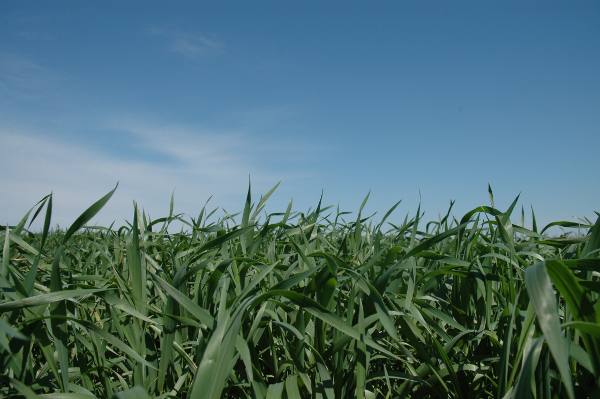
When commodity prices are high farmers may look for ways to boost yields and capitalize on markets that may not stay up forever.
And they may be tempted to try new products that claim to increase nutrient efficiency, stabilize nutrients or increase yield potential.
Be wary of claims that seem too good to be true, says Oklahoma crop consultant Chad Godsey, speaking at the recent No-till Oklahoma Conference in Norman.
Claims of increased yield may not always be what they seem, Godsey said. “Sometimes marketers take data and change the scale to suggest a significant increase in yield because of the product.” Those claims may be, at best, overstated. “Producers may be bombarded with new products, especially with high commodity prices. So, how can they evaluate the benefits?”
First, Godsey recommends asking for third-party research, typically university trials over multiple states. “Also, ask how the trials were conducted. Were they replicated over time and space, multiple sites and seasons?”
He recommended assessing the yield potential of a specific environment where trials take place. “Conditions and yield potential in the Corn Belt are different from those in the Southwest. Ask for the specifics.”
Other issues farmers should be wary of include claims that one form of a nutrient is better than another; practices such as tissue testing are equal to soil analyses; and that low salt fertilizer products are superior.
“The claim that polyphosphate may not be as readily available as orthophosphates is one issue. “The effects of both forms of phosphate on crop production are equal,” Godsey said. “We don’t ever expect to see a difference, so don’t base fertilization decisions on orthophosphate or polyphosphate claims. Consider the cost per pound of the phosphate.”
He said farmers also hear claims that nitrogen stabilizers stretch out and hold nitrogen longer and help stability.
“But a grower should ask how much more nitrogen he could apply for the same cost of the product. Test strips for three or four years would be a good trial to determine fertility.”
Benefits of foliar-applied nitrogen also may be hyped. “But think about how many pounds of nitrogen you are applying. A pound of nitrogen is a pound of nitrogen. We have no magic bullets.”
Growth regulators also come with claims of using plant hormones to increase growth or to aid growth during drought stress, Godsey said. “But hormones occur naturally in the plant anyway. Again, look for third party research and university testing,” to evaluate benefits.
Those extra products may not be the limiting factors in crop production. “Once you take care of the big things—seeding rate, cultivar selection, rotation, pH, nitrogen, phosphorus and potassium—then you can worry about the small things.”
Tissue testing serves a purpose. “It’s a good diagnostic tool,” Godsey said. “But farmers should not base fertility recommendations on tissue tests. It’s a good tool but it needs to be used correctly.”
Low salt fertilizer may have a place in crop production. “We may see benefits (with low salt fertilizer) if producers put high amounts of starter fertilizer in the furrow or apply higher rates of nitrogen with the seed. Otherwise, a pound of nitrogen is still a pound of nitrogen. The same can be said for any other nutrient.”
Farmers often exchange ideas through on-line forums. “Don’t count on those to get an unbiased opinion,” he said.
Also, don’t expect to see significant yield benefits from new products. “It’s been a long time since we could get a 5 percent to a 10 percent yield bump in one year,” he said. “Be realistic about potential yield increases.”
He recommends farmers do their own on-farm replicated testing. “Figure out how many pounds of product you are applying per acre. And remember, there are no magic bullets.”
About the Author(s)
You May Also Like






